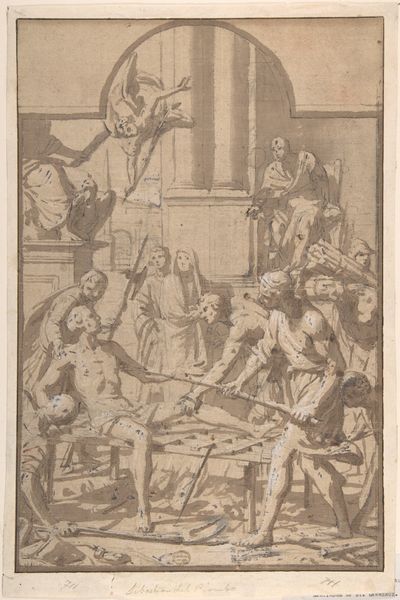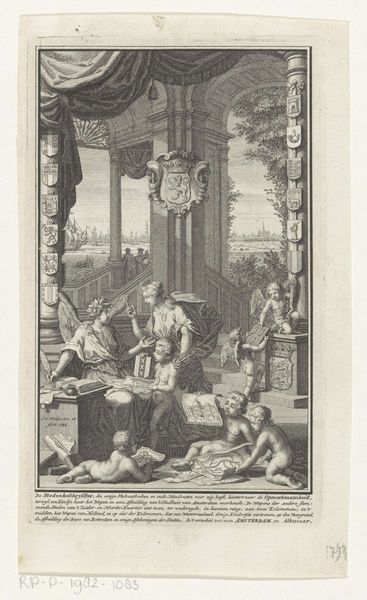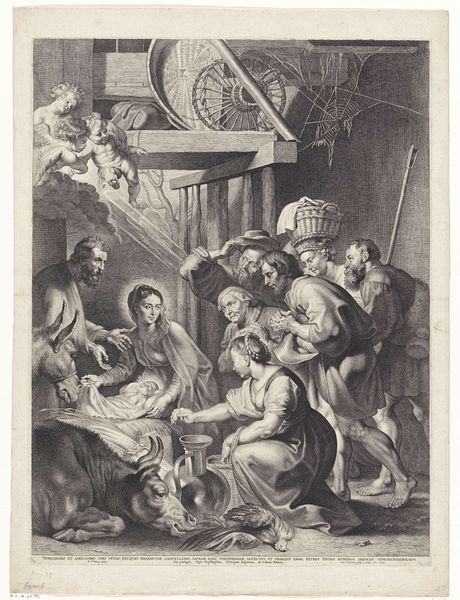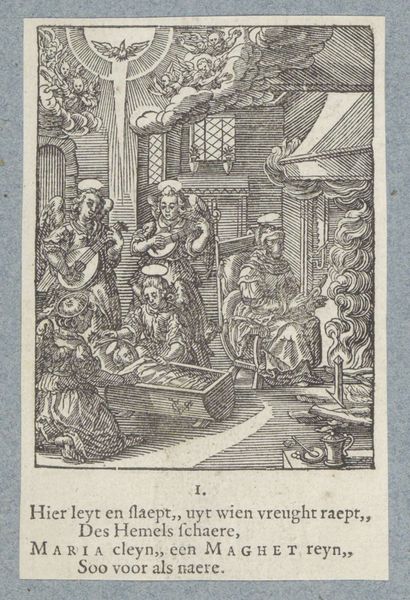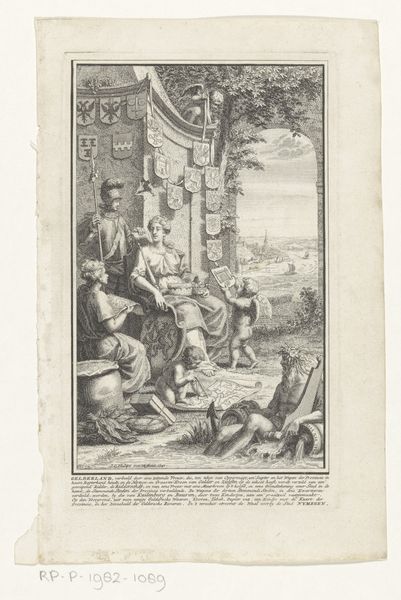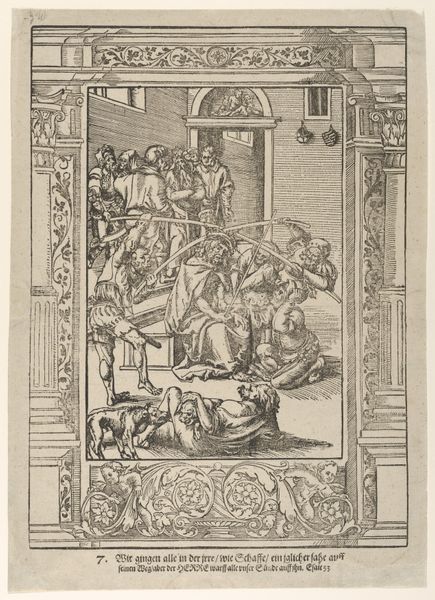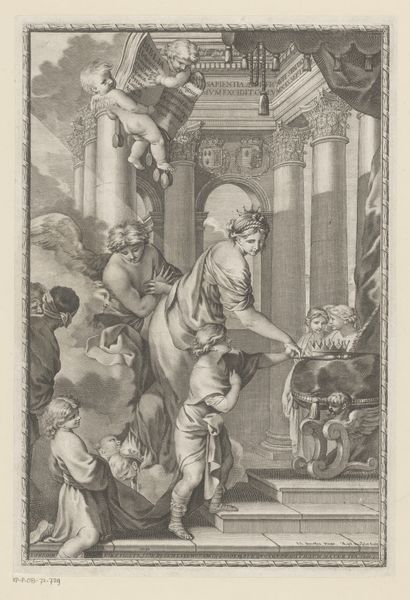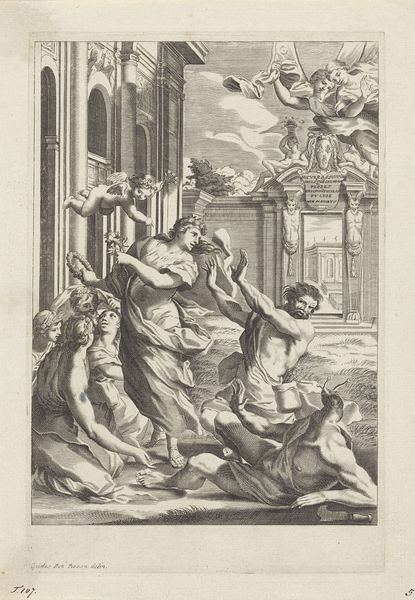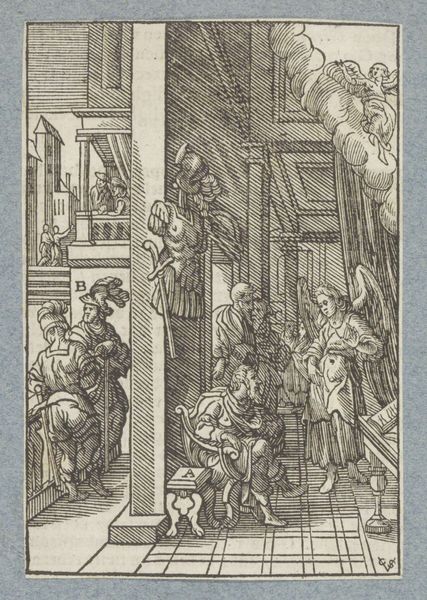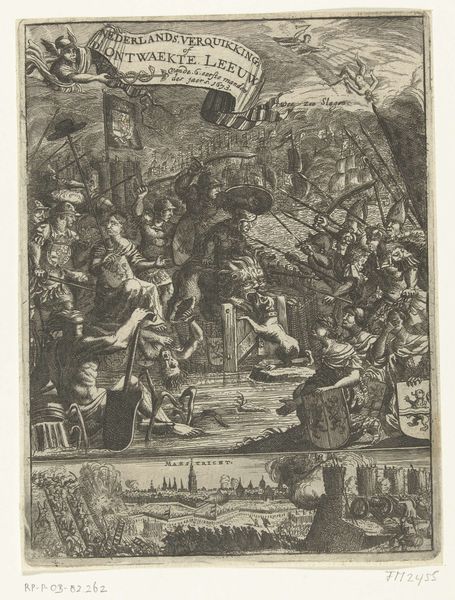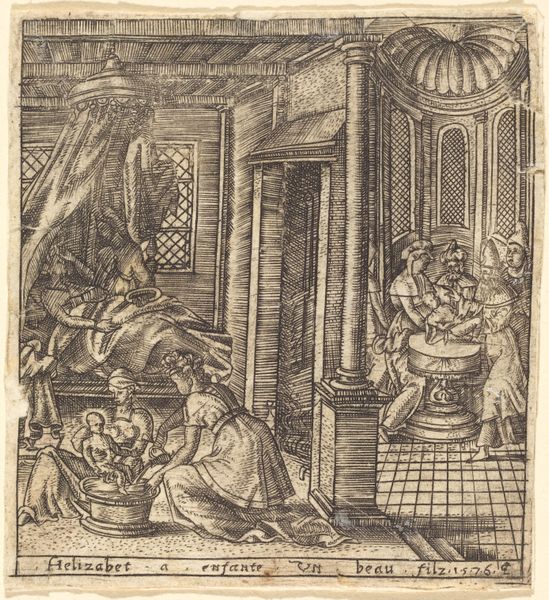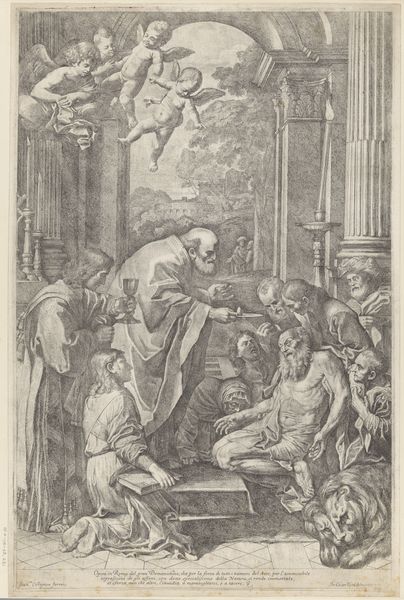
Dimensions: height 162 mm, width 112 mm
Copyright: Rijks Museum: Open Domain
Curator: Ah, "Parabel van Lazarus en de rijke man," or "Parable of Lazarus and the Rich Man," created in 1583 by Abraham de Bruyn. It's an engraving currently held here at the Rijksmuseum. The work reflects the era's social preoccupations through a biblical narrative. Editor: Gosh, even with its intricate detail, it feels rather...bleak? The stark contrast between the opulence on one side and, well, what looks like fiery torment on the other creates such a disturbing mood. Curator: Precisely. De Bruyn is visualizing a potent lesson here, a severe social critique embedded in the New Testament tale from the Gospel of Luke. Lazarus, the poor beggar, ignored in life, finds solace in heaven while the rich man suffers. Editor: The composition emphasizes that divide, doesn't it? We have Lazarus kneeling, almost pleading, alongside this gaunt, clearly sympathetic dog...and the rich man is feasting lavishly. The attention to fabric, food, all that wealth...it's meant to repel us, right? Curator: Absolutely. These contrasts aren't merely illustrative. They’re about social commentary within the framework of religious instruction. The church used art to educate a largely illiterate population, imprinting moral lessons visually and emotionally. This particular narrative spoke to wealth disparities and their spiritual consequences. Editor: You can almost hear the hellfire crackling on the right side, with that flailing figure! De Bruyn's choices really steer our empathy towards Lazarus, and make the rich man's afterlife look, shall we say, less appealing. Makes you wonder what the patrons of the era really thought about this imagery. Curator: An excellent point! That reception would depend heavily on an individual's status and their relationship with the dominant ideologies surrounding wealth, charity, and salvation. This image likely played different roles – perhaps acting as a stark warning, or even as an ironic observation, depending on who viewed it. Editor: You know, even through the historical layers and the moral weight, I still connect with that loyal, skinny dog by Lazarus. It sort of highlights the basic human need for companionship and kindness, a connection that transcends wealth and fate. Curator: That's the brilliance of de Bruyn's skill – he allows such humanizing details to creep into an otherwise severe theological representation. It prevents the message from being merely dogmatic and opens it up for wider interpretation. Editor: Well, after looking at this engraving, I am certainly pondering some existential questions – not just about afterlife but about my own earthly indulgences. Food for thought, definitely! Curator: Yes, indeed. It shows the remarkable capacity of even old prints to spark a contemporary discourse about our value systems and moral compass, across centuries and perspectives.
Comments
No comments
Be the first to comment and join the conversation on the ultimate creative platform.
